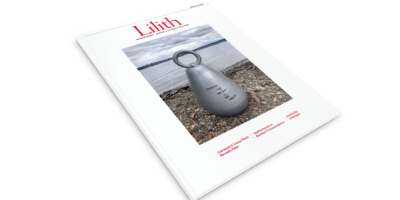
Preserving Italian-Jewish Recipes
In Cooking alla Giudia (Artisan Books, $40), Benedetta Jasmine Guetta, an Italian-Jewish food writer, explores the roots recipes of the Jewish food of Italy.
The book is part cookbook (with detailed recipes and beautiful pictures), part history of the Jewish diaspora, and part travel guide to various Jewish neighborhoods around il bel paese. In a way, Cooking alla Giudia feels like a continuation of the project that the late Edda Servi Machlin started in the ’80s with her quintessential Italian Jewish cookbooks.
Guetta writes that this cookbook is her attempt to preserve the recipes of a people with a dwindling population; according to her, only 27,000 Jews remain
in Italy (less than half a percent of the country’s population).
“Time has a way of eroding the past. One of the things that makes us human is to attempt to prevent this erosion, to keep the past alive. While some people erect monuments and dedicate plaques, and others capture likenesses in portraits and on film, I believe that sharing recipes is a very effective way to preserve our memories.”
A number of the recipes such as the Prosciutto e Salame d’Oca (Goose Pro-
sciutto and Salami) and the Tacchnio Coi Vovi (Turkey Stuffed Meatloaf ) require the precision and tools (sterile needles and food-safe thread) of a surgeon, and many others require artichoke butchering, fava bean shucking, and deep frying.
In addition to these ambitious, time-intensive recipes, the cookbook includes some easier-to-make recipes such as Spaghetti alla Carbonara Kasher (Kosher Carbonara, Two Ways, in which you replace the guanciale with turkey bacon, dried beef or zucchini) and vegetable sides like Spinaci con Pinoli e Passerine (Spinach with Pine Nuts and Raisins) and Fagiolini a Corralo (Green Beans in Tomato Sauce).
Guetta makes a compelling case for documenting these recipes, some of which she found through research and others through word of mouth, and she
inspires readers, even those of us without Italian (or perhaps even those without Jewish) roots to cook from her collection on special occasions. The book includes notes about which dishes to prepare for the various Jewish holidays. According to Guetta, Capunet di Sukkot e Simchat Torah, Beef-Stuffed Cabbage Rolls, are served for Simchat Torah, the two rolls together representing a Torah scroll; Pizzarelle di Pesach, or Honey Matzo Fritters, are a sweet treat for Passover.
Guetta includes interesting notes about the roots of the ingredients. Many
quintessential Italian ingredients such as eggplants (hello, eggplant parm), orecchiette, and saffron (used in Milan’s famous risotto), were introduced into
Italian cooking by way of displaced and peripatetic Jews. Guetta also explains how Italian Jews, repeatedly forced into ghettos over the centuries, learned to make do with less desirable cuts of meat and inexpensive small fish.
Diverse in flavors and rich in detailed history, Cooking alla Giudia is bound to
pique your interest and your appetite.
(Note: do not read this cookbook on an empty stomach!)
Rachel Zarrow a San Francisco based writer of fiction and cultural criticism. She also writes a reading and recipe recommendation newsletter.




